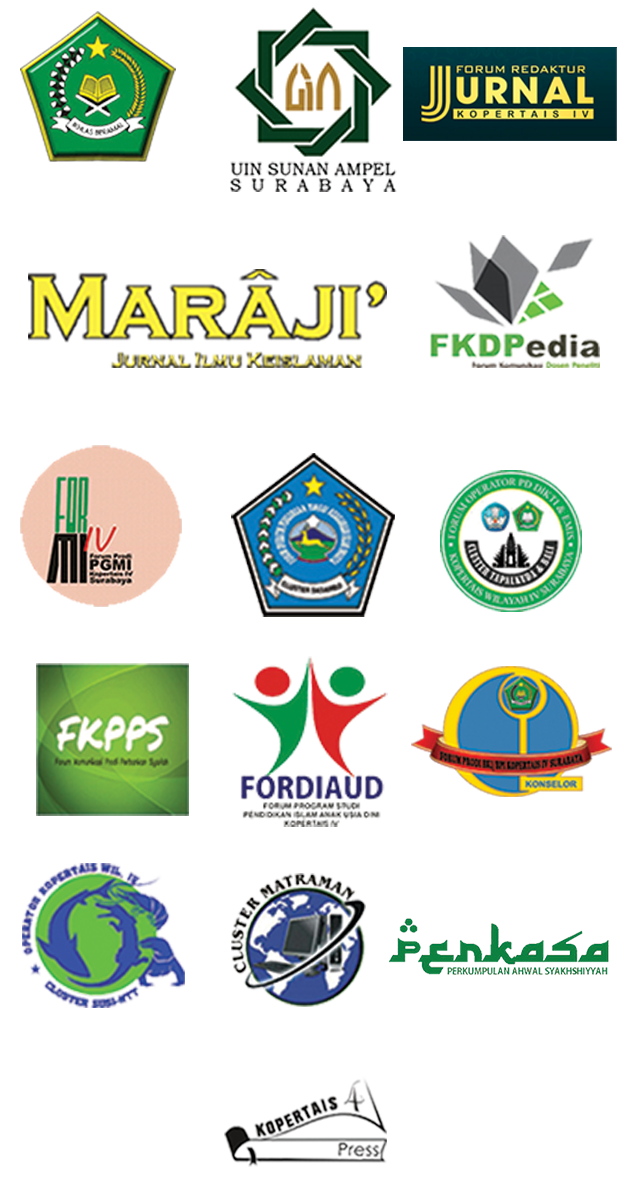Dakwah Virtual Yayasan Spirit Dakwah Indonesia (SPIDI) Tulungagung
Abstract
virtual communication can not be separated from an internet media that uses it as a means of communication, here looks a shift in style or human habits in communicating convey information with each other. Because today humans do not have to communicate at the same time and place. Challenges Globalization and technological development is what makes the national identity and local ethnicity attractive, there is inequality and meet a dead end resulting in social disintegration. Youth is now and easily infected by the virus Fast Food Culture, Fun behavior of hedons and fashion trend of western. Young people show themselves in the wrong way and way, they are not ashamed to display unethical photos on social media accounts, pornography and other issues. Based on the background of the above problems the author makes a conceptual article "Dakwah Virtual Spirit Foundation Dakwah Indonesia (SPIDI) Tulungagung" where interesting is Meme and Vlog is seen as a form of da'wah in the most effective virtual media, applied by Spirit Da'wah Indonesia, both of which become embryo culture for today's digital children. Filled with sermons, motivations, decency and everyday attitudes, rewards and so on, so as to shape the attitude and personality of self from positive feelings and positive virtual explorations.
Downloads
References
American Library Association. 2004. “Information Literacy Competency Standards for Higher Education”. Dalam http://www.ala.org/acrlstandards/informa-tionliteracycompetecy.html, diunduh 11 November 2016.
Avarez, B.A. 2009. “Digital Natives in The Information Age: How Student Study Habits Reflect The Need for Change at A University Library”. Oxford : Education Style.
Bennett, S., Maton, K., and Kervin, L. 2008. “The Digital Natives Debate: A Critical Review of The Evidence. Dalam British Journal of Educational Technology, 39(5).
Bruce, C., 1997.The Seven Faces of Information Literacy. Adelaide: Auslib Press.
Brynko, B., 2009. “Greeting The Barbarians at The Gate”. NFAIS: Dalam Information Today.
Badjuri, Adi, 2005.Santri Virtual, Kuliah Umum Informatika, UIN Jakarta, Oktober.
Dhanu, 2011. “Awal Penyakit Menurut Al-Qur’an dan Akhlak Mulia-Sebuah Solusi Penyembuh Penyakit Secara Islami” Kontemplasi, Vol, 3, No. 7.
Douglas E. Cowan, 2004. Religion Online, London: Routledge.
Hine, Christine, Virtual Ethnography. London: Sage Publication Ltd, 2001.
Hidayatullah, Syarif, 2004. Islam Virtual, Keberadaan Dunia Islam Di Internet, Yogjakarta: MIFTA.
Hancock, Dawson R. & Bob Algozinne. 2006. Doing Case Study Research: A Practical Guide for Beginning Researchers. New York: Teachers College Press.
Komnas PA, 2015. Data Moralitas Remaja Indonesia 2015, Kompas terbitan Juni 2015 Edisi II.
Laquey, Tracy, 1997. Sahabat Internet, Terj. Hasan J. Osparksik, Bandung: Penerbit ITB.
Morten T. Højsgaard dan Margit Warburg, 2005. Religion and Cyberspace, London: Routledge.
Mansur, Yusuf, “Keajaiban dan Keistimewaan Sedekah”, Republika, terbit 19 April 2013.
Morten T. Højsgaard dan Margit Warburg, 2005. Religion and Cyberspace. London: Routledge.
O’hara, Kieron, 2002. Plato dan Internet, Yogyakarta: Penerbit Jendela.
Prihartini, T., Nuryoto, S., Aviatin, T, 2007. “Hubungan antara komunikasi efektif tentang seksualitas dalam keluarga dengan sikap remaja awal terhadap pergaulan bebas antar lawan jenis”, Jurnal Psikologi, Vol. 6, No.2, Maret, 2007.
Putra, Nusa dan Santi Lisnawati, 2013. Penelitian Kualitatif Pendidikan Agama Islam. Bandung :PT. Remaja Rosdakarya.
Prensky, Marc. 2001. “Digital Natives Digital Immigrants”. Horizon: MCB University Press.
Richard West dan Lynn H. Turner, 2008.Teori Komunikasi: Analisis dan Aplikasi: Buku 2, Jakarta: Salemba Humaika.
Robert K. Yin. 2011. Qualitative Research from Start to Finish. New York: The Guilford Press.
Rogers, Everett M, 1996. Communications Technologie, London: The Free Press Collier Mc Millan Publishing.
Suhandang, Kustadi, 1980. Jurnalistik Publik dan Media, Bandung: Sinar Baru.
Salim, Agus. 2006. Teori dan Paradigma Penelitian Sosial. Yogyakarta: Tiara Wacana.
Santrock, J.W, 2006. Adolescence: Perkembangan Remaja, Jakarta: Erlangga.
Santrock, J.W, 2007. Remaja,Jilid II, Jakarta: Erlangga.
Sarwono, S.W, 2013. Psikologi Remaja, Jakarta: Rajawali Pers.
Syahrin, “Dakwah pada Internet”, Jawa Pos, terbit 23 Oktober 2011.
BKKBN [on-line], http://www.bkkbn.go.id/ViewBerita.aspx?BeritaID=1543, Diakses pada tanggal 23 April 2016.
http://www.alsofwah.or.id/?pilih=lihatkonsultasi&id=3440, Diakses pada tanggal 23 April 2016.
http://e-marketer.com/internet users word/ Papers /326890/, diakses 10 November 2016.
www.spiritdakwahindonesia.blogspot.com, Diakses pada tanggal 23 April 2016.









